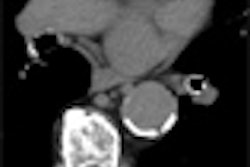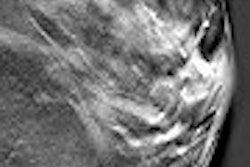In a move certain to send chills through the imaging community, an Oregon health insurer has stopped offering reimbursement for computer-aided detection (CAD) for radiology exams. The decision could have major ramifications for the CAD industry should it ripple to other third-party payors.
In a statement sent to providers in June, ODS Companies of Portland said it has made a policy decision not to reimburse providers for CAD used with any type of indication. ODS is a provider of dental, medical, and professional liability insurance that serves more than 600,000 Oregonians.
In announcing the decision, the company said it was influenced by the recent negative study on CAD published in the April 5, 2007, issue of the New England Journal of Medicine.
"Until now, ODS has considered computer-aided detection experimental and investigational for all imaging services except when used in conjunction with mammograms," said medical director Dr. Csaba Mera. "Based on (the NEJM study), ODS will no longer be covering CAD for any indication ... effective July 22, 2007."
"ODS has a process for reviewing the literature and following up on any medical criteria and policies we establish for procedures," Mera explained in an interview with AuntMinnie.com. "We were in the process of determining if we needed to have a policy for CAD with diagnostic procedures other than mammography, when the article was published in the NEJM."
"We were impressed enough to say that we believe this study, and decided not to continue to provide reimbursement of CAD used with mammograms," Mera said. ODS has been routinely reimbursing for mammography CAD for several years.
In the NEJM study, a multicenter research team examined data associated with 429,000 screening mammograms performed for 222,000 women in 43 community-based mammography facilities located in three states. The study was conducted under the direction of Dr. Joshua Fenton, assistant professor of family and community medicine at the Center for Health Service Research in Primary Care at the University of California's UC Davis Cancer Center in Sacramento.
Over the course of the study period from 1998 to 2002, mammography CAD was adopted for use with mammograms by seven of the facilities, with a total of 38 radiologists interpreting 31,000 examinations.
The study team calculated the specificity, sensitivity, and positive predictive value (PPV) of screening mammography, both with and without CAD, as well as the rates of biopsy, breast cancer, detection, and overall accuracy. As a point of reference, CAD was approved for clinical use by the U.S. Food and Drug Administration (FDA) in 1998, the year the study was initiated.
"The use of computer-aided detection was associated with increases in potential harms of screening mammography, including higher recall rates, and was of uncertain clinical benefit," the researchers stated. In particular, false positives produced by CAD reduced the accuracy of mammography facilities using the technology, while the increase in sensitivity experienced by sites using CAD was not statistically significant, they said.
Size matters once again
Mera said that the sheer size of the study convinced ODS of the validity of its findings. "We believe that this is such a high-powered study that we don't want to pay for something that potentially not only doesn't help women who may be inappropriately diagnosed, but also could potentially make the situation worse," he said. "That is our rationale."
The study has produced its share of controversy in the imaging community. Shortly after the study was published, the American College of Radiology (ACR) of Reston, VA, issued a statement defending CAD.
"Reported decreased accuracy of mammography when using CAD was due to increased false positives, not to fewer cancers being detected," the ACR said. "There is a fair amount of evidence outside the current study to suggest that when properly used, CAD may indeed be worthwhile. It seems unwarranted to consider abandoning this potentially valuable tool at this time."
Responding to criticisms subsequently published in the NEJM, the authors concurred with critics that "larger observational studies of the use of CAD by diverse radiologists are necessary to clarify the relative benefits and harms of a now widely disseminated technology." They estimated that "an adequately powered randomized trial would require the interpretation of hundreds of thousands of mammograms by dozens of radiologists."
ODS medical director Mera said that if another large trial is conducted, and its outcome is different from the Fenton study results, the payor would re-evaluate its decision. "If future studies that appear to be well-powered and statistically valid are published, we will once again review our position, and, if appropriate, make any necessary amendments to our criteria."
Mera emphasized that because ODS does not incur significant costs in reimbursing providers for CAD, cost cutting was not the motivation for the change. "We just don't want to pay for something that is useless or potentially harmful," he said.
Rising to CAD's defense
When contacted by AuntMinnie.com, Dr. John Patti, chair of the ACR Economics Commission, said that "the (current procedure terminology) code approval process and AMA Relative Value Update Committee (RUC) valuation of (CAD) were completed after presentation of extensive evidence, including multiple published clinical evaluations. The ACR believes that it is imprudent for any payor to change coverage policy based only on one new literature citation, and will work directly with this payor to resolve this issue."
Michael Longacre, a principal with HealthCare Market Strategies, a Yamhill, OR, consulting firm that facilitates the early adoption of new technologies by addressing reimbursement issues, noted that while both the U.S. Congress and the FDA were heavily lobbied to authorize reimbursement to encourage the adoption of CAD technology with mammograms, its utilization is now considered an established "gold standard" component that many radiologists feel they must use as protection against lawsuits.
"To my knowledge, no one has stated that the Fenton study is a landmark study that would help validate the decision by ODS," Longacre said.
Theresa Gorenc, director of health policy for the Medical Imaging and Technology Alliance (MITA), a division of the National Electrical Manufacturers Association (NEMA) of Rosslyn, VA, believes that the NEJM study significantly undervalues the importance of CAD in breast cancer detection. "As CAD continues to evolve and increase in accuracy over time, little argument can be made to challenge the benefits of the technology," she said.
MITA believes that the numerous prospective controlled CAD studies showing an increase in cancer detection rates of 4.6% to 19.5% cannot be overshadowed by a single study. "When weighing the cost-effectiveness of this technology, insurers must consider the improved cancer detection at an earlier stage against the cost of cancer treatment when the disease is detected at a later stage," Gorenc said.
"We believe that if the Fenton study was performed again, applying more recent CAD technology and adjusting for differences in variables, such as age of patients and experience of radiologists performing the tests, the results of the study would show statistically significant increased sensitivity for the detection of cancer. MITA encourages controlled prospective trials rather than retrospective observational studies, such as those performed in Fenton's study."
Out of five major health insurance providers contacted by AuntMinnie.com, spokespeople from Aetna of Hartford, CT, and Cigna of Philadelphia responded. Both have published clinical policies that state that CAD is a medically necessary adjunct to mammography.
Cigna has a medical technology assessment committee comprised of physicians and other clinicians who meet regularly and analyze the available peer-reviewed literature, policies and technology assessments, and evidence summaries from external experts, according to Amy Turkington, a Cigna spokesperson. To the best of Turkington's knowledge, Cigna does not make major policy decisions based on a single article.
By Cynthia Keen
AuntMinnie.com contributing writer
July 11, 2007
Related Reading
Studies show CAD matches up well with CR mammo, FFDM, May 24, 2007
NEJM study pans CAD, draws attention and criticism, April 5, 2007
CAD boosts single reading of mammograms, September 29, 2006
Multimodality breast CAD workstation improves diagnostic performance, August 17, 2006
Copyright © 2007 AuntMinnie.com



















